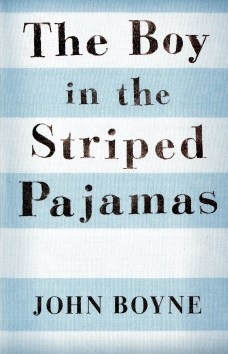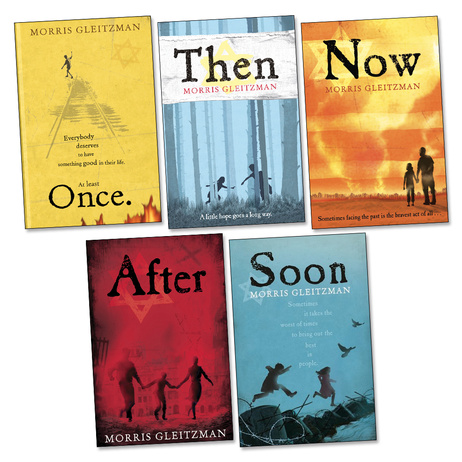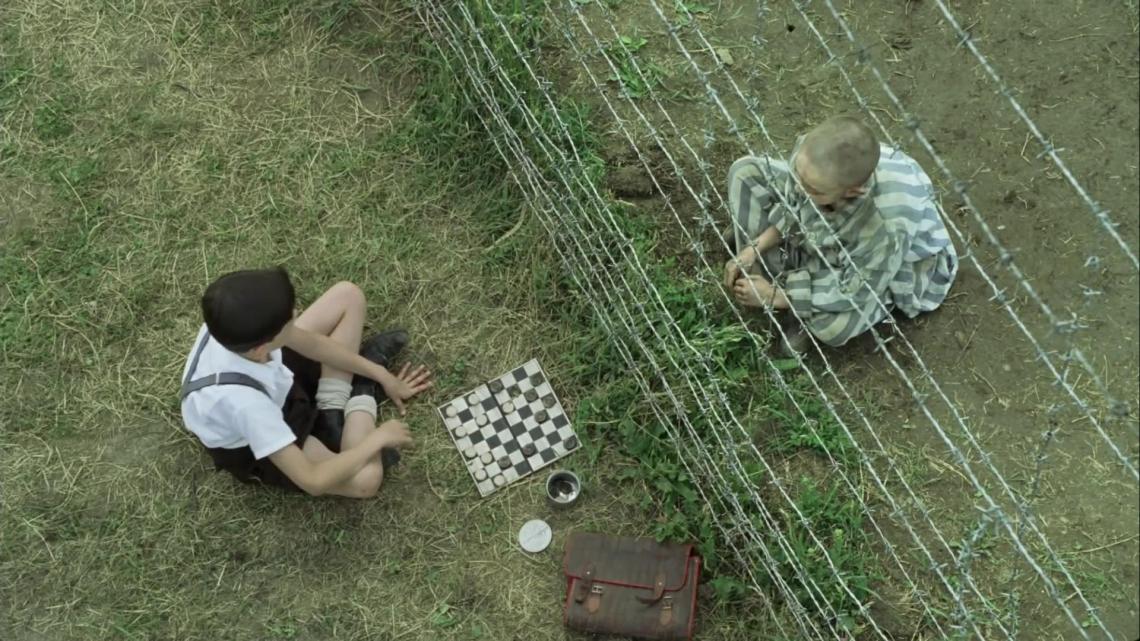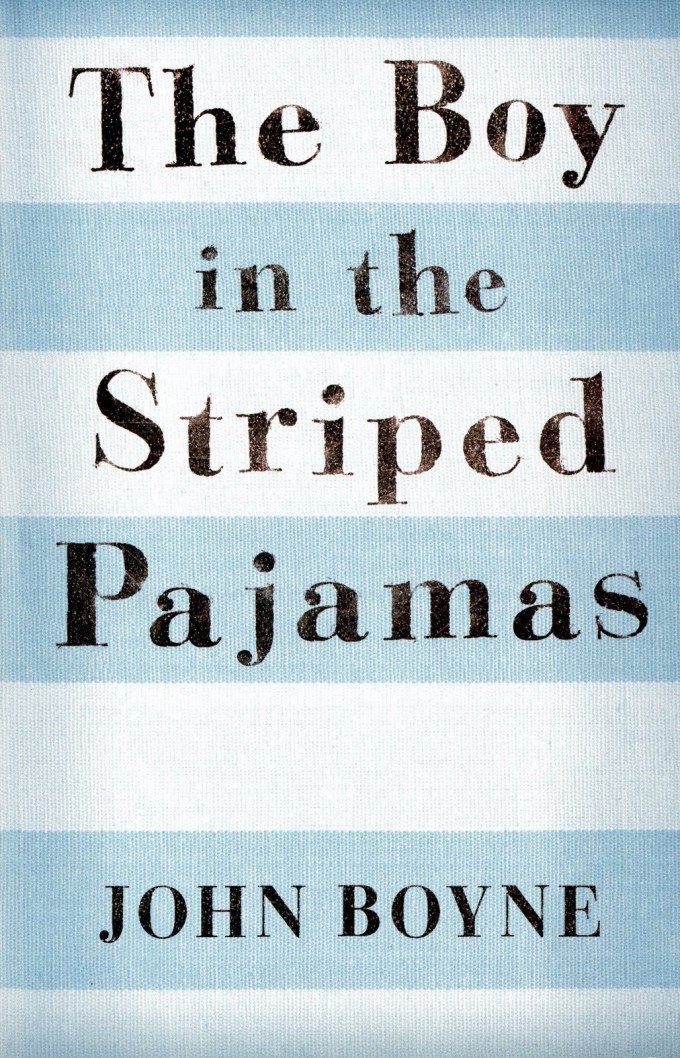Grasping the Unimaginable: Recent Holocaust Novels for Children by Morris Gleitzman and John Boyne (2010): A journal article by Ruth Gilbert in ‚Children’s Literature in Education‘
To discuss the historical reality of Holocaust fiction is always very controversial and problematic. Hence, the subject needs to be treated with extreme sensitivity (Majaro, 2014). Informed by this caveat, Ruth Gilbert, a lecturer at the University of Winchester, devotes one of her articles to the examination of different narrative techniques used in Holocaust fiction. This article, which appeared in the peer-reviewed journal Children’s Literature in Education in 2010, according to the publisher’s website, was addressed to academics, librarians, teachers and other interested adults (Springer, 2017).

Using the children novels of The Boy in the Striped Pyjamas by John Boyne (2006) and Moritz Gleitzman’s Once (2006) and Then (2010), Gilbert discusses their relation to Holocaust representation. In doing so, she focuses on the role of “silence” within these narratives. She regards silence as a central element in narrating the history of the Holocaust. Moreover, she analyses the ways in which the texts can be used for pedagogical purposes. In other words, the text caters, especially, for the needs of teachers. Although Gilbert makes use of specific literary examples, it is also possible to follow her arguments without having read the books. Gilbert includes detailed summaries of the books and supports her arguments with concrete examples from the novels which contribute to the overall coherence of the article and its reader-friendliness.
Gilbert criticises Boyne’s novel sharply not only by supporting her arguments with citing leading experts and researchers within the field of Holocaust fiction such as the academics Eaglestone and Cesarani, but also by elaborating on the authors’ viewpoints to criticism in various interviews. Focusing on narrative techniques, in contrast to other existing articles, Gilbert criticises the book for the unrealistic naivety of its protagonist and its fable-like narration (Boyne labeled his novel as “fable”). Gilbert argues that the simplistic form and the clear moral message of a typical fable “diminishes the complexity of historical elements” (2014, p.357) and conveys a wrong image of the Holocaust-reality. On the other hand, Gilbert praises Gleitzman’s complex novels for their success in representing the difficult nature of the phenomenon “within such incomprehensible contexts” (2014, p.357). Nevertheless, Gilbert also criticises Gleitzman for “minor issues” (2014, p.360) such as the heroism of the protagonist’s character.

Overall, Gilbert’s well-informed arguments and the variety of her references to other scholars suggests that the article is a profound work of research. This feature makes the article reliable and appealing for academics and researchers. Furthermore, its narrow focus on narrative technique helps the reader to gain specialized insight within the wider field of children’s literature or Holocaust studies. The included bibliography – which is expected in scholarly work – invites its readers to expand their knowledge in further reading and refer to key works within the research field such. Among these references, one could name Robert Eaglestone, Lydia Kokkola and Sue Vice. Gilbert uses a variety of up-to-date sources including primary and secondary literature such as reviews, interviews of the authors, journal articles and books – the oldest source published 15 years before her article.
Gilbert’s article can be useful for students because it avoids the use of extremely technical words and is hence not too difficult to follow. Furthermore the author seems to be an expert in her academic field focussing her work around Holocaust Literature and British-Jewish Literature. On the other hand, it could be also of great interest to the journal-intended teacher audience as it offers a good choice of Holocaust books to be included in courses on Holocaust fiction. I, personally, liked the fact that she not only does criticise bad examples of Holocaust fiction – as there are loads of negative reviews and criticism of Boyne’s novel already out there – but also introduces and discusses a valuable novel which could be used as an alternative choice for teaching in schools. The article, in other words, invites the teachers to replace Boyne’s novel, which was at the time very popular for teaching, with Gleitzman’s novels.

Only two years after the publication of ‚The Boy in The Striped Pyjamas‘ it was turned into a movie.
The article made me aware of shortcomings of the ways in which Boyne’s novel represents Holocaust. I read parts of the book after watching documentaries, reading a lot of autobiographic novels, and therefore, didn’t pay enough attention to the erroneous representations of this actual historical event. Gilbert’s thought-provoking article convinced me that Boyne’s novel should not be used as an introduction to Holocaust.
bibliography:
Gilbert, R. (2010). Grasping the Unimaginable: Recent Holocaust Novels for Children by Morris Gleitzman and John Boyne. Children’s Literature in Education, 41, 355-366. DOI: 10.1007/s10583-010-9119-7
Majaro, N. (2014). Looking for Ideology in Children’s Fiction Regarding the Holocaust. New Review of Children’s Literature and Librarianship, 20 (1), 1-14. DOI: 10.1080/13614541.2014.863637
Image sources:
http://smithsonianapa.org/bookdragon/the-boy-in-the-striped-pyjamas-by-john-boyne/
https://shop.scholastic.co.uk/products/Felix-and-Zelda-Pack-x-5-Morris-Gleitzman-9789999511049
http://statcdn.fandango.com/MPX/image/NBCU_Fandango/626/315/061610-1_1920x1080_534844995529.jpg

